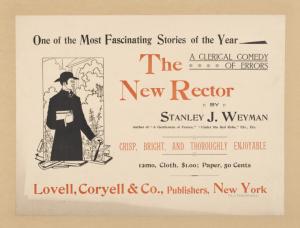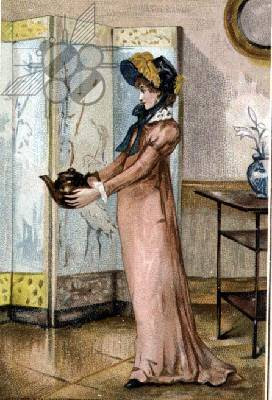In my book collection on LibraryThing, you can find a title, Tell No Man, by Adela Rogers St. Johns. There aren’t many on LT who own the book, only four of us, and there are no reviews of it posted to the site. It was a best seller in 1966, the year in which it was originally published. I read it as an impressionable adolescent, but dipping into it some forty years later, it still is a well-told story.
Tell No Man centers on a young couple, Hank and Melanie Gavin, with another young couple, Colin and Sybil Rowe, providing a parallel sub-plot. Hank and Colin are service-buddies from their time in the Korean War. Hank, now a wealthy young stockbroker, married to Melanie, and living in Chicago, has a conversion experience following the suicide of a friend. He decides to go to seminary and ultimately follow a new career path in Christian ministry. The primary theme of the book is how one goes about the practice of Christian belief amidst the materialism of the ‘sixties culture. Melanie, his fashionable young wife, is wedded in the truest sense to Hank but has issues with his sudden change of direction, particularly as she herself has no faith in anything beyond her own fundamental competence. As I dipped into it again, I realized that this was one of the books that sent me off to read other books, such as C.S. Lewis' The Great Divorce which is used as a plot device. Tell No Man is a fictional exploration of faith, but suffers from an ending which, even at age twelve, I was able to recognize as being unsatisfactory. I suspect, but have no proof, that the character of Hank was always intended to remind the reader of the Presbyterian chaplain of the Senate, Peter Marshall.
However, one of the most memorable incidents in the text is a discussion that Hank has with one of the characters when he tells of an experiment he tries with regard to reading the Bible. In the interest of approaching the Bible as a story rather than as sacred text, Hank goes searching for one that he can read the same way as he would an ordinary book, ie. no two-column formats, no footnotes or scriptural references down the middle or at the foot of the page. It's a problem for him to find one that matches his need. I remember being quite struck by that idea when I read the book initially because it was something I was aware of but hadn't quite articulated to myself. Most printed Bibles aren’t designed for purposes of extended reading. They are primarily designed from the perspective of the publisher who must keep an eye on production costs, particularly with regard to paper while balancing off any negative flack for changing the presentation of the sacred text. (You know that Bibles traditionally are printed on special tissue-thin paper so that the final printed volume isn’t the size of the thickest Harry Potter. Special ink, as well, to avoid bleed-through on the page. Very expensive process.)
All of this came up in my head during church this past Sunday. I was reading that confirmands were responsible for either having read through the complete text of the Gospel of Luke or watching it on a DVD before instruction started this week. I wondered briefly whether the students would just sit down and read it through rapidly in a traditional New Testament they might own or if, like Hank Gavin, they wished they might be able to sit down and read the Gospel in a more ordinary format. For all I know, the DVD is the new equivalent to Hank's expensive, readable Bible.
You may recall a few years ago the attempt by a publisher to package the Bible in a new format, specifically known as the Pocket Canons. I was all gung-ho until I read they'd had the temerity to abridge the Book of Psalms.
At any rate, have you ever given any thought to how the physical design and layout of a book contributes to the way in which you actually process the content?












